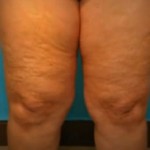Also known as lipoplasty or liposculpture suction lipectomy, liposuction is a type of cosmetic surgical procedure that helps in removing fat deposits from specific areas of the body, thereby reshaping and slimming the body as well as enhancing its proportion and contours. Liposuction involves clinical elimination of fat cells via varied techniques. The aim is to remove only the right amount of fat in a manner which results in minimal damage to other tissues, least discomfort for the patient, and nil disturbance of the fluid balance.
The different techniques of liposuction are typically used to decrease or get rid of fat deposits in different body areas such as the thighs,abdomen, waist, hips, buttocks, upper arms, love handles or flanks, inner knee, back, chest region, calves, ankles, and chin, cheeks, and neck. Liposuction may be carried out as a standalone procedure or along with other plastic surgery treatments like breast size reduction, a facelift, or a tummy tuck.
Most people go for liposuction only after exhausting all other available options for fat reduction such as exercising, diet changes, etc. Occasionally, liposuction may become a necessity if the presence of increased fat poses elevated threat to the life and well-being of a person.Liposuction can be performed at a surgery center, a clinic, or as an outpatient option. People who want to go for large quantities of fat removal may need to check into a hospital for the surgery and then stay there for a day or two of recovery.
Liposuction cannot be considered as a substitute for exercising and a healthy diet. It cannot be used to treat obesity; saggy, loose skin; or cellulite.Individuals with a personal history of cardiac diseases, a weakened immune system, certain forms of cancer, and/or diabetes should not go for liposuction.
Liposuction: The procedure
Liposuction is carried out by inserting a hallow tube know as a cannula, along with a suction tool or an aspirator, inside the area with excess fat. The fat cells are later eliminated via suction. The treatment is performed after patients are given local anesthesia and sedatives. People with minor liposuction surgeries can be discharged on the day of the operation itself.
One the major advantages of liposuction is that patients will not gain weight in the operated areas post-surgery. It is also important to note that the procedure however does not guarantee that people who undergo liposuction will not gain any weight. The best way to maintain the slim and shapely body post-surgery is to exercise regularly and eat a healthy, balanced diet.
There are several different liposuction procedures that make use of varied techniques to eliminate the fat cells. Each one causes minimal damage to the adjoining tissues. All the techniques are being improved with each passing day.
Types of liposuction procedures
Some of the main types of liposuction procedures are listed below:
- PAL or Power Assisted Liposuction: The cannula may be the main tool that is used for performing liposuction. However, it may sometimes be ineffective in eliminating all the unnecessary fat cells. In such scenarios, doctors go for PAL so as to carry out a complete and precise removal of fat. It is done via gadgets with better control and easier maneuverability, which break down the fat with small and rapid vibrations. Some of the risks involved with this type of liposuction are uneven, bumpy, loose, and wrinkled skin as well as pigmentation.
- Tumescent liposuction:It is considered as the best, most effective, and safest type of liposuction. Patients are administered a comparatively bigger dosage of local anesthesia before fat removal procedures are performed. This leads to decreased pain, a symptom most common in patients post liposuction.Tumescent liposuction also results in minimal or nil skin anomalies, swelling, inflammation, and/or bleeding. The surgery is typically smooth with minimum of side effects. The most common complaints post-surgery include fluid buildup and lidocaine toxicity.
- UAL or Ultrasonic Liposuction: It is generally a follow-up treatment for tumescent liposuction and is carried out to contour the body to a precise level. Before the removal of fat from specific regions, doctors liquefy the fat using high-frequency sound waves. The technique is typically used to correct abnormal fat levels in body areas like the neck, knees, chin, cheeks, ankles, and calves.According to surgeons, these regions are quite difficult to treat. Some of the side effects of UAL include scarring, blistering, burns, and seroma, i.e., a pouch filled with serous liquid which occasionally forms after surgery.
- Smartlipo or Smart liposuction: As opposed to other traditional liposuction methods, smart liposuction is less costly, low-impact, and less invasive, with a faster recovery period. This fairly new technique involves the use of local anesthesia for pain alleviation and a laser to destroy fat cells in specific body areas. It is later flushed out from the body via natural processes. The surgery is very cost-effective and has minimum side effects. Most patients have stated that smart liposuction is one of the best types of cosmetic surgery.

How much does liposuction cost?
The cost of a liposuction procedure can vary widely and is dependent on a number of factors such as the areas that need to be treated; the type of liposuction; use of post-surgery apparels; anesthesia fees; medical tests; the geographical location of the surgeon/clinic; doctor’s fees which in turn is dependent on the qualification and experience of the surgeon; hospital or operating facility charges; pre and post-surgery care; medication costs; and accommodation, travel, and other such ancillary costs.
As per the 2013 statistics provided by the American Society of Plastic Surgeons, the average cost of liposuction is about $2,900. It may be noted that this figure does not include additional expenses like anesthesiologist’s fees, etc.The costs for liposuction is higher for men as compared to women, majorly because males have a bigger body size and its surgical enhancement requires more effort and time.
It may be noted that liposuction or any resulting medical complications are usually not covered by insurance. However, a number of plastic surgeons provide patient financing plans. It is thus best to consult the doctor about the costs involved before undergoing the procedure.


